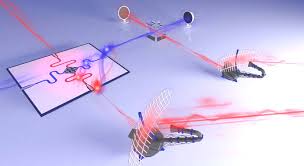
Breaking News
 $26M Frozen on Blockchain - With One Click
$26M Frozen on Blockchain - With One Click
 Italy are on national strike shutdown rejecting digital enslavement...
Italy are on national strike shutdown rejecting digital enslavement...
 The following U.S. states are currently using the rebranded "Reporty Homeland Security" so
The following U.S. states are currently using the rebranded "Reporty Homeland Security" so
 NATO Chief Urges Europe To Prepare For Long-Term World War With Russia, China, Iran & North Korea
NATO Chief Urges Europe To Prepare For Long-Term World War With Russia, China, Iran & North Korea
Top Tech News
 HUGE 32kWh LiFePO4 DIY Battery w/ 628Ah Cells! 90 Minute Build
HUGE 32kWh LiFePO4 DIY Battery w/ 628Ah Cells! 90 Minute Build
 What Has Bitcoin Become 17 Years After Satoshi Nakamoto Published The Whitepaper?
What Has Bitcoin Become 17 Years After Satoshi Nakamoto Published The Whitepaper?
 Japan just injected artificial blood into a human. No blood type needed. No refrigeration.
Japan just injected artificial blood into a human. No blood type needed. No refrigeration.
 The 6 Best LLM Tools To Run Models Locally
The 6 Best LLM Tools To Run Models Locally
 Testing My First Sodium-Ion Solar Battery
Testing My First Sodium-Ion Solar Battery
 A man once paralyzed from the waist down now stands on his own, not with machines or wires,...
A man once paralyzed from the waist down now stands on his own, not with machines or wires,...
 Review: Thumb-sized thermal camera turns your phone into a smart tool
Review: Thumb-sized thermal camera turns your phone into a smart tool
 Army To Bring Nuclear Microreactors To Its Bases By 2028
Army To Bring Nuclear Microreactors To Its Bases By 2028
 Nissan Says It's On Track For Solid-State Batteries That Double EV Range By 2028
Nissan Says It's On Track For Solid-State Batteries That Double EV Range By 2028
"Quantum radar" uses entangled photons to detect objects

Quantum entanglement describes the bizarre state where two particles can become linked so tightly that they seem to communicate instantly, no matter how far apart they are. Measuring the state of one particle will instantly change the state of the other, hypothetically even if it's on the other side of the universe. That implies that the information is moving faster than the speed of light, which is thought to be impossible – and yet, it's clearly and measurably happening. The phenomenon even unnerved Einstein himself, who famously described it as "spooky action at a distance."
While we still don't entirely understand why or how it works, that's not stopping scientists figuring out ways to use it to our advantage. Strides are being made towards creating quantum computers and a quantum internet, both of which would be super fast and nigh-unhackable. And now, in a new study by physicists at the Institute of Science and Technology Austria (IST Austria), MIT and the University of York, the phenomenon been applied to radar.

 Carbon based computers that run on iron
Carbon based computers that run on iron

